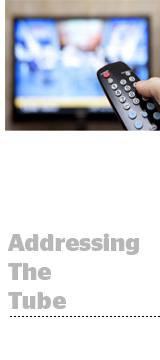 TV ad delivery will become more addressable as more viewers stream video from set-top boxes and consume IP-based content.
TV ad delivery will become more addressable as more viewers stream video from set-top boxes and consume IP-based content.
Although the addressable TV ad market is still only worth $300 million compared to linear TV’s $70 billion, cable operators and agencies agree that growing the addressable TV footprint will introduce more flexibility into the cross-platform sales process.
“Addressable” TV inventory can be defined as advertising that is dynamically served on either an impression or household-level basis. The benefit of selling on impressions, rather than traditional units, is advertisers can fine-tune their TV targets.
“If you’re a media owner and you find your over-the-top audience is more receptive to a message within a certain industry vertical, you might be able to monetize that inventory at a slightly higher rate,” said Randy Cooke, VP of programmatic TV for SpotXchange. “By incorporating device-level information, you can begin to institute frequency caps and offer advertisers an episodic ad campaign based on the number of times someone was exposed to a message.”
As ABC has demonstrated, enabling dynamic ad insertion across video-on-demand, set-top box and digital inventory drives more incremental value for the network because it unifies inventory and allows the network to reclaim “lost” linear viewership.
VOD, in particular, represents a big opportunity for networks, cable MSOs and advertisers because it’s impression-based and scalable – a provider like Canoe, for instance, can target ads across 130 DMAs and more than 1 billion nonlinear impressions.
“Any type of technology-driven ad insertion technique will make things easier for us,” said Michael Bologna, president of GroupM’s addressable TV agency Modi Media. “It’s a combination of using data to better associate content and technology to better reduce the waste by only sending the commercials to the households that make the most sense.”
Cable operators have the most to gain from dynamically served ads, since there’s a lot of scale – they represent 50-70 ad-insertable networks at the least, Cooke reasoned – and they work with a multitude of network partners.
For advertisers, dynamic ad insertion diversifies the ad pod and enables more granular segmentation.
“If you’re a car advertiser, you can run different adverts or calls to action for dealers in different parts of the country,” said Hilary Perchard, chief of investments for European broadcaster and pay-TV operator Sky. “It essentially means we can make more money from the ads and command a higher price.”
Dynamic ad insertion enables sequential messaging, Perchard said, as well as frequency capping.
One of the lingering challenges of unlocking more addressable TV inventory is unifying the legacy systems that sit between cable operators, multichannel video programming distributors and networks.
Owning the pipes and the platform components enables flexible and nimble infrastructure. Broadcasters can dynamically deliver ads in a live linear stream through a satellite feed, download ads into the set-top box and then live-stitch ads targeted to the individual in rapid succession.
“Dynamic ad insertion is a little different than linear broadcast addressability,” SpotXchange’s Cooke said. “You’re looking at media owners weighing the costs of building out an addressable platform in the legacy infrastructure vs. waiting it out a little bit and monetizing addressable within an IP-based environment.”
Experts predict more inventory in the US will be dynamically served and addressable in the future.
Pre-merger, AT&T and DirecTV each respectively pursued their own addressable strategies.
DirecTV works with 50 premium cable networks to dynamically insert ads, and ran more than 500 addressable campaigns last year. And AT&T U-Verse, which supplies more than 15 million set-top boxes, notes 85% of customers also view video on-demand content; it is working toward dynamic ad insertion for all over-the-top content.
Similarly, Comcast, which has 550 ad zones within its footprint, is working toward improving dynamic ad insertion capabilities within its nonlinear platforms like set-top boxes, TV Everywhere apps and VOD. Its acquisition of addressable TV ad company Visible World was intended to accelerate the pace.
“It will encourage people to move beyond the legacy and dinosaur television and into a data and tech-driven infrastructure,” Bologna said.














